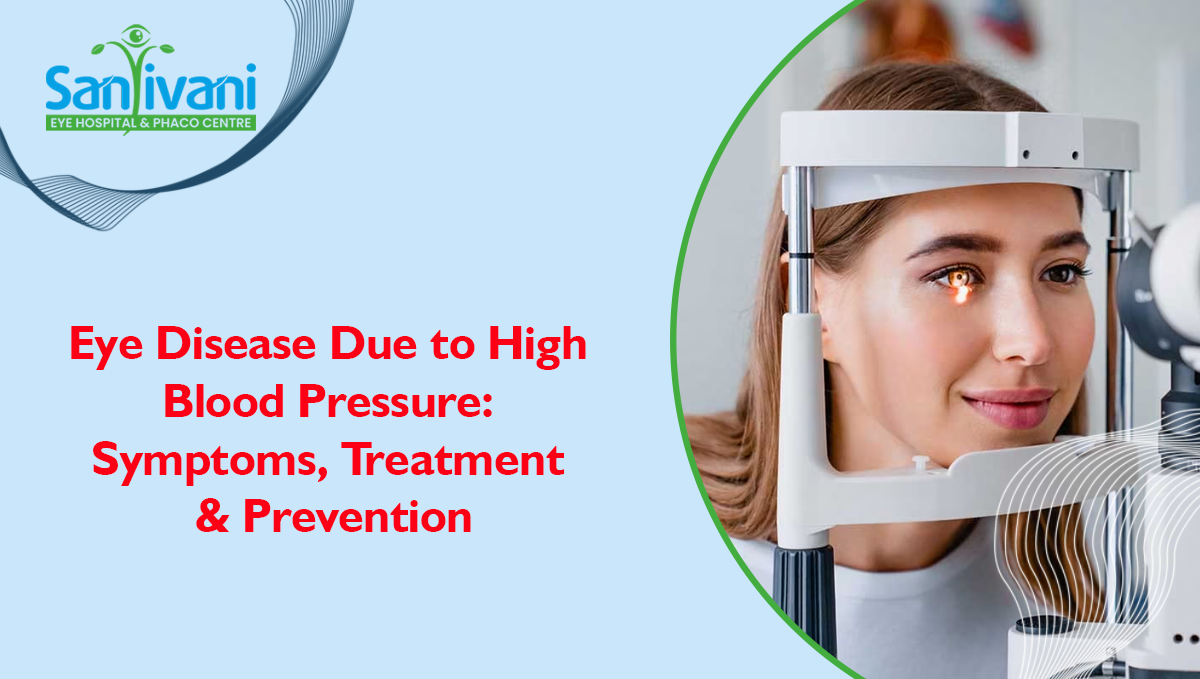
Eye Disease Due to High Blood Pressure: Symptoms, Treatment & Prevention
Introduction
High blood pressure, or hypertension, is a common condition that affects millions of people worldwide. While its impact on heart health is widely known, its effects on the eyes are often overlooked. However, hypertension can lead to various eye diseases and complications, ranging from mild discomfort to severe vision loss. Understanding the symptoms, treatment options, and preventive measures is crucial for managing high blood pressure-related eye diseases effectively.
Symptoms:
- 1. Vision Changes: Hypertension can cause vision changes such as blurry vision, double vision, or difficulty focusing.
- 2. Eye Pain: Some individuals with high blood pressure may experience eye pain, especially behind the eyes.
- 3. Floaters: High blood pressure can lead to the appearance of floaters – tiny specks or cobweb-like shapes that drift across your field of vision.
- 4. Vision Loss: In severe cases, hypertension can lead to vision loss or even blindness due to conditions like hypertensive retinopathy or retinal vein occlusion.
Eye Diseases Associated with High Blood Pressure:
- 1. Hypertensive Retinopathy: This condition occurs when high blood pressure damages the blood vessels in the retina, leading to bleeding, swelling, and fluid buildup. Symptoms include vision changes, headaches, and sometimes vision loss.
- 2. Retinal Vein Occlusion: High blood pressure can cause a blockage in the veins that carry blood away from the retina, leading to vision loss or distortion.
- 3. Optic Neuropathy: Hypertension can damage the optic nerve, resulting in optic neuropathy, which can cause vision loss and even blindness if left untreated.
- 4. Choroidopathy: In some cases, high blood pressure can lead to choroidopathy, which involves fluid buildup under the retina, leading to distorted vision and vision loss.
Treatment:
- 1. Blood Pressure Management: The primary treatment for high blood pressure-related eye diseases involves managing blood pressure levels through lifestyle changes and medication.
- 2. Medication: Depending on the severity of the eye condition, your doctor may prescribe medications such as anti-VEGF drugs or corticosteroids to reduce inflammation and fluid buildup in the eyes.
- 3. Laser Therapy: In cases of severe retinopathy or vein occlusion, laser therapy may be used to seal leaking blood vessels or improve blood flow to the retina.
- 4. Surgery: In advanced cases where other treatments are ineffective, surgery may be necessary to repair damaged blood vessels or remove scar tissue.
Prevention:
- 1. Regular Eye Exams: The Routine eye exams are essential for detecting early signs of eye diseases associated with high blood pressure.
- 2. Blood Pressure Monitoring: Keep track of your blood pressure levels regularly and consult with your healthcare provider to manage hypertension effectively.
- 3. Healthy Lifestyle: Maintain a healthy lifestyle by eating a balanced diet, exercising regularly, limiting alcohol intake, and avoiding tobacco use.
- 4. Medication Adherence: If prescribed medication for high blood pressure, take it as directed by your doctor and attend regular follow-up appointments.
- 5. Stress Management: Practice stress-reduction techniques such as meditation, deep breathing exercises, or engaging in hobbies to lower stress levels, which can help control blood pressure.
Conclusion :
In conclusion, high blood pressure can have serious implications for eye health, leading to various eye diseases and complications. Recognizing the symptoms, seeking timely treatment, and adopting preventive measures are essential for preserving vision and maintaining overall well-being. By effectively managing hypertension and prioritizing eye care, individuals can reduce the risk of developing debilitating eye conditions associated with high blood pressure.